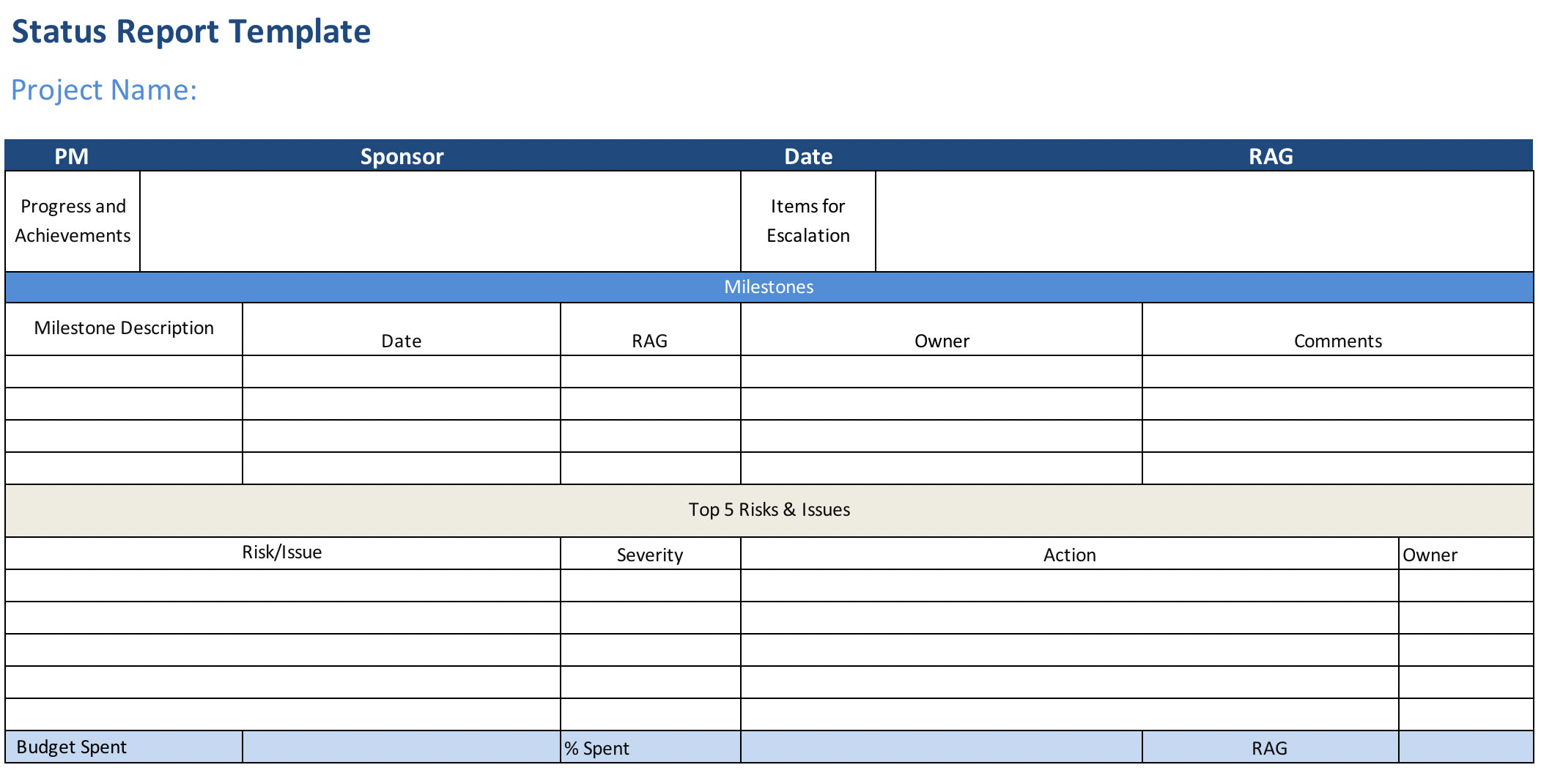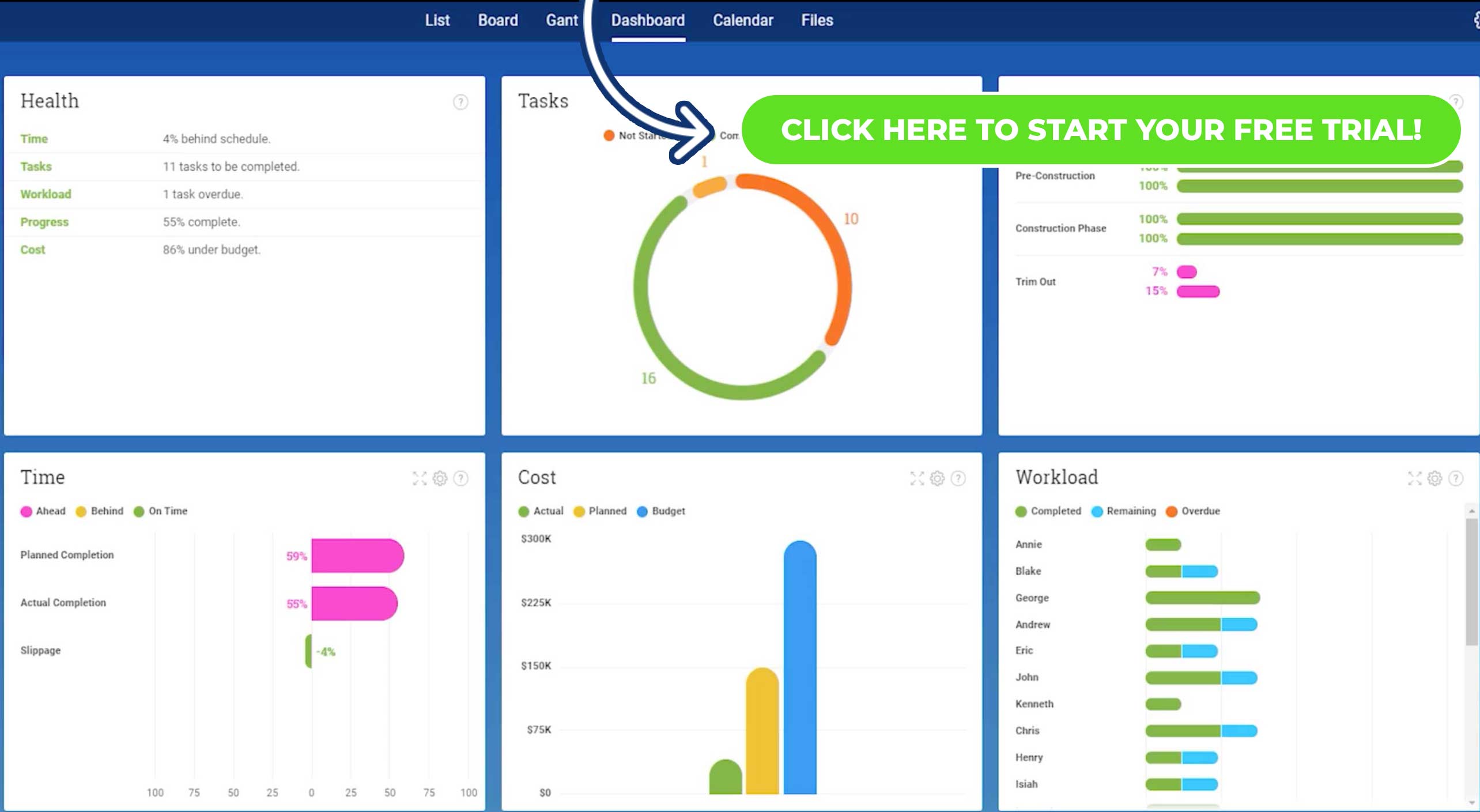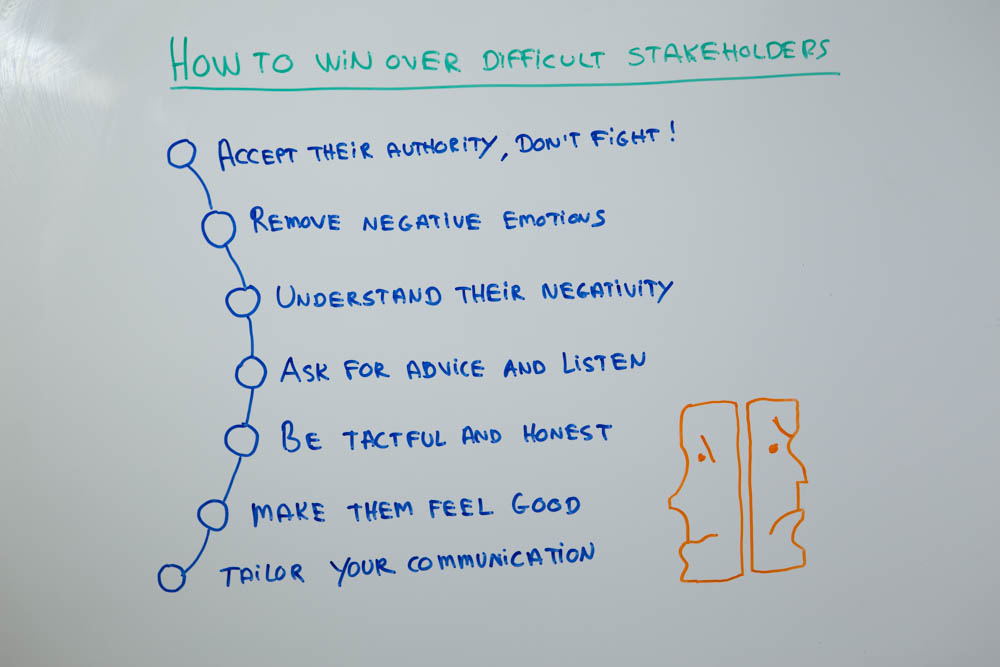When you’re leading a project, part of what you’re doing is working with stakeholders who hired you to get that work done they way they want it. This can often be a handful, so we’ve provided you some practical tips on how to deal with difficult stakeholders.
7 Tips for Managing Difficult Stakeholders
We’ve all had to deal with difficult stakeholders, but no matter how difficult they might be there are ways to build better relationships and win over their support. Next time you’re frustrated by your dealings with difficult stakeholders, try these seven tips:
1. Accept Their Authority: Don’t Fight It
It’s best to pick your fights or you’ll always be at war. When dealing with stakeholders there are times to disagree, but those times are few and far between. Instead, give in on the small stuff. Stakeholders are in a position of authority and you must acknowledge that hierarchical structure. It saves you aggravation but also plants the seeds of trust. Your stakeholders will respect you, believe it or not, and probably pull back from their argumentative ways to some degree.
2. Remove Negative Emotions
It’s easy to get emotional. What starts as a disagreement, builds into a wave of anger and resentment. Kids have temper tantrums, not professionals. Also, kids don’t hold onto those negative emotions. We can learn from that. It’s not wrong to feel mad, it is a problem to give into that negativity and, worse, keep it burning light a torch. That will only destroy your relationship with your stakeholders and the whole project with it.
3. Understand Their Negativity
Part of developing a compassionate relationship is having empathy. Empathy is the ability to feel others’ emotions, and should be incorporated into any stakeholder management strategy. If you can take a moment to step back, acknowledge what they’re feeling and then work towards remedying that, you’re on the road to enlightenment and a successful project.
4. Ask for Advice and Listen
Often difficult stakeholders are difficult for a reason. Some have just difficult personalities, of course, but others might be acting they way they are because they feel unheard. Imagine how you’d react if you thought no one was listening to you. Therefore, try to just be still, quiet and open. Hear what they have to say, even ask for their advice. This is not merely a psychological technique, but a practical one in terms of managing your project. They are, after all, your stakeholders and have a vested interest in the success of the project. Listen to them, they could have some gold to give you. You should incorporate this into a stakeholder management plan.
5. Be Tactful and Honest
Sometimes there are going to be valid reasons for conflict. When those occur in the project, you can’t just sweep them under the rug. Your job is to bring in a successful project within the quality expectations of your stakeholders. If you see that they’re acting against their best interest, it’s your job to address this. But to get the idea across you must not only be honest, but tactful. No one likes to hear that they’re wrong, so find a way to say that in other words or, even better, don’t speak of right and wrong but of the project and its needs.
6. Make Them Feel Good
Buttering them up helps, too. You don’t want to be insincere, but if you can make your stakeholders feel good, then there is almost nothing they won’t do for you. Even the most difficult one is going to change their tune. Don’t flatter, of course, do a good job. That’s where your stakeholders’ hearts are, and that’s how you’ll make them happy.
7. Tailor Your Communication
Not all stakeholders are the same. You need to know your stakeholders well. Just as you define who they are at the beginning of a project, you’ll want to determine what is the best course for communication. That can be practical, like do you prefer text, email, phone calls or face-to-face meetings? But it’s also psychological. Some might want you to boost their egos a bit, others might find that phony and it’ll backfire on you. Know your stakeholders and tailor your communications to fit their needs and personalities.
Related: Free Communication Plan Template
Good Reports for Difficult Stakeholders
If you need to convince a difficult stakeholder, it’s good to come prepared. People act on emotions and their opinions can easily sway them, but rarely in business does someone refute the facts—especially if those facts are going to result in lost revenue or higher costs.
This is where good project reporting comes in. There are three reports that are very useful when trying to get a difficult stakeholder to see things your way. One is the status report. It’s a report that comes out periodically and develops a snapshot of the project’s progress, such as its health, schedule, issues that have arised, scope, resources, cost and more. Armed with those facts, even the most difficult stakeholder will listen.

Another is the variance report. This tells what has changed in the project, measured against your baseline. It’s a way to determine if your planned progress is being reflected in the actual progress of the project. If there’s a difference between your planned and your actual cost, schedule and scope, stakeholders will want to know and will be open to your advice.
Finally, there’s the budget report. This might be the most persuasive, as it hits stakeholders in the pocketbook. If the cost of the project is skyrocketing or if your stakeholders’ expectations will lead to an inflated budget, the dollars and cents argument is one that carries great influence.
ProjectManager.com and Difficult Stakeholders
Stakeholders want to stay in the loop. They’re somewhat outside the project and are never comfortable without a clear window in to give them a sense of how things are going. ProjectManager.com is cloud-based project management software that can provide a clear window into project status for even the most difficult stakeholders. Since it’s cloud-based, the data you see is as current as they most recent status update, so stakeholders are getting an accurate picture of the project’s progress.
One-click reporting tools give you the information you need to answer questions and provide answers to your difficult stakeholders. We have many reports that can be filtered to show just the information you want, including status, variance and budget.
When you present to stakeholders, our real-time dashboard collects six project metrics and automatically converts them into easy-to-read color graphs and charts. They show where your project is, whether tasks are completed or still in progress and must more.

Difficult stakeholders are a problem, but they’re easier to deal with when you have the right tools, such as ProjectManager.com. See what we can do to help you smooth things out with your difficult stakeholders by taking this free 30-day trial.
Watch This Video to Learn How to Deal with Difficult Stakeholders
It’s a bit different dealing with difficulty when it’s coming from a place of authority rather than dealing with team members who are difficult that are under your command. But it all comes down to mindful understanding and careful communications, which is how you lead a team and even those in authority over you. To learn more, watch Susanne Madsen, PMP, as she explains how to deal with difficult stakeholders.
Here’s a shot of the whiteboard for your reference!

Thanks for watching!
Pro-Tip: Basically, we’re showing you how to lead when you don’t have authority, and leadership expert expands on those techniques with his article 10 Ways to Influence Without Authority. You can’t have enough arrows in your quiver when it comes to persuasive methods.
Video Transcription
Hi, I’m Susanne Madsen. Welcome to this whiteboard session on How To Win Over Difficult Stakeholders. You may have some of those in your project, stakeholders who you feel are not really coming to the table. They’re not fully bought-in on the project. You’re not really sure why, but you would like to build better relationships with them and win them over, so that they become more supportive. How can you do that?
First of all, you have to accept their authority and don’t fight them. That may be very, very difficult if you feel that you don’t respect them, or maybe you’re not really sure of them. I invite you to look inwards and really examine the feelings you have for these stakeholders. If you walk into a room aiming to build trust with mistrust, you’re not going to get very far. So you have to remove your negative emotions, become conscious of what those emotions are, and put them to one side, however difficult it may be. Accept their position.
Then you have to understand the root cause of the negativity. Are they not bought-in because they don’t have time, and it just comes across as being skeptical? Or are they truly not bought-in to the project because they don’t feel that their requirements are being met for the project?
Maybe they don’t have a clear role in the project, which makes them sit on the fence. The best way to find out what the root cause of their negativity is, is to ask them for advice. This one is a really big one. I invite you to find some time, one on one with the stakeholder. Sit down with them and ask some open questions. Elicit feedback from them.
You could, for instance, ask, “I would like to ask for some feedback about how you feel we could work better together,” or, “What feedback might you have on how we could improve on the project?” They’re very open questions. They work wonders. It may take a bit of courage to ask them, but it’s definitely worth it.
What you will get back from your stakeholder is an honest answer that will give you a wealth of information that can tell you how you can repair that relationship, but do not go into defensive mode. Listen to them. Be tactful and honest.
You have to say things the way they are. Don’t speak down to people. Be polite, but be honest about what you require them to do on the project. It’s very hard to deliver a successful project without the stakeholders being bought-in. Make them feel good. That always works wonders. Talk about things that they’re generally interested in. Consider what’s in it for them.
And finally, tailor your communication. If you know that your stakeholder likes to schedule things, then set up a scheduled meeting. If they’re more informal, take them to a coffee shop. Try to mirror them. Seek to speak to them on their terms.
Thank you for watching. Please visit us again at ProjectManager.com.
(This post was updated December 2019)
No comments:
Post a Comment